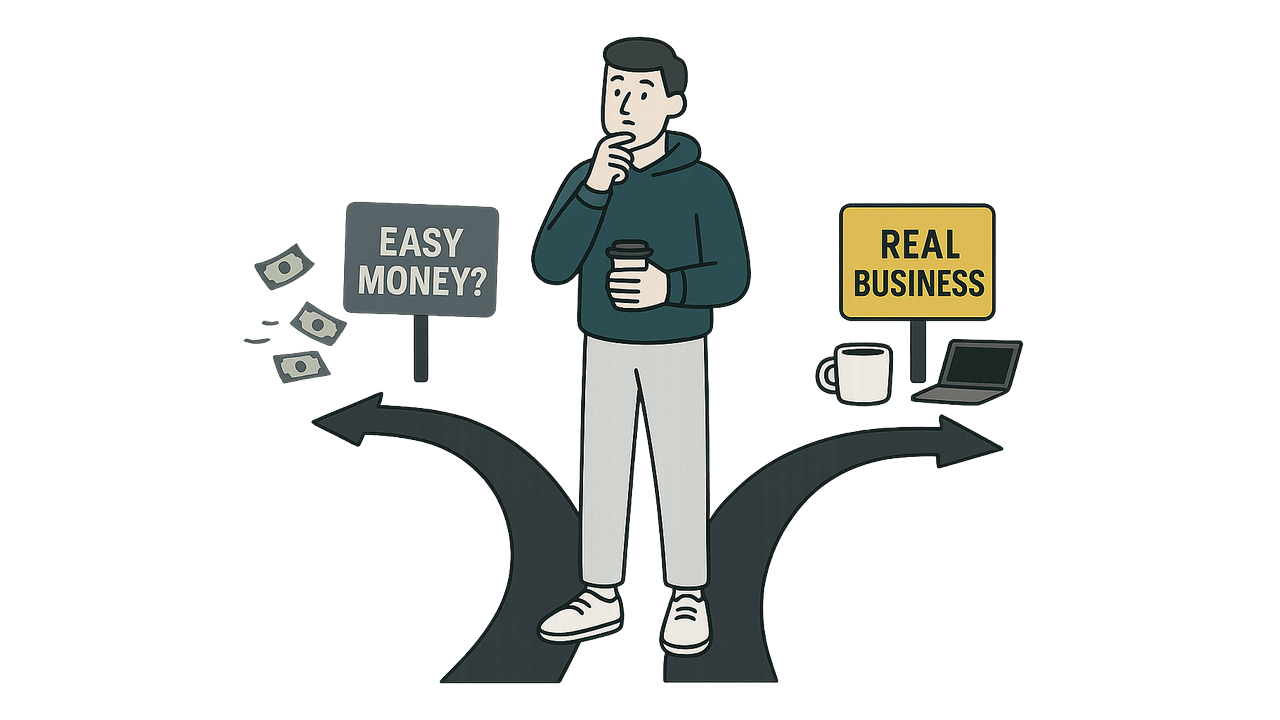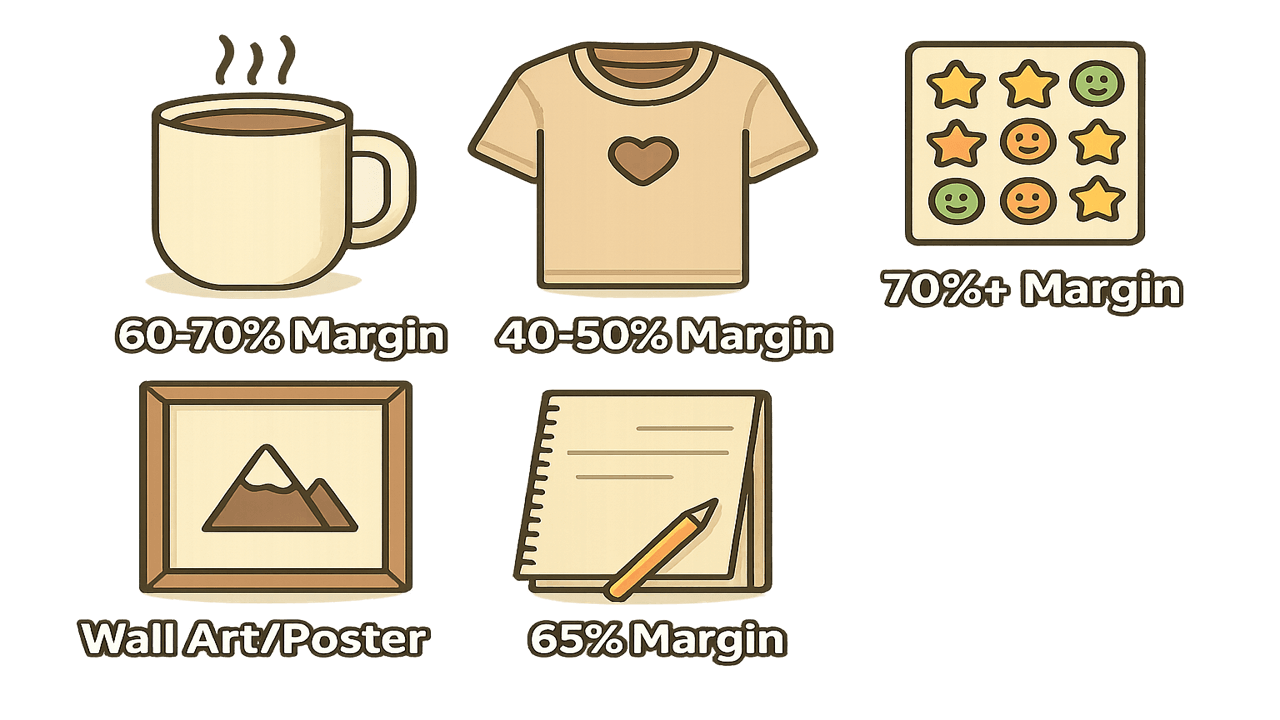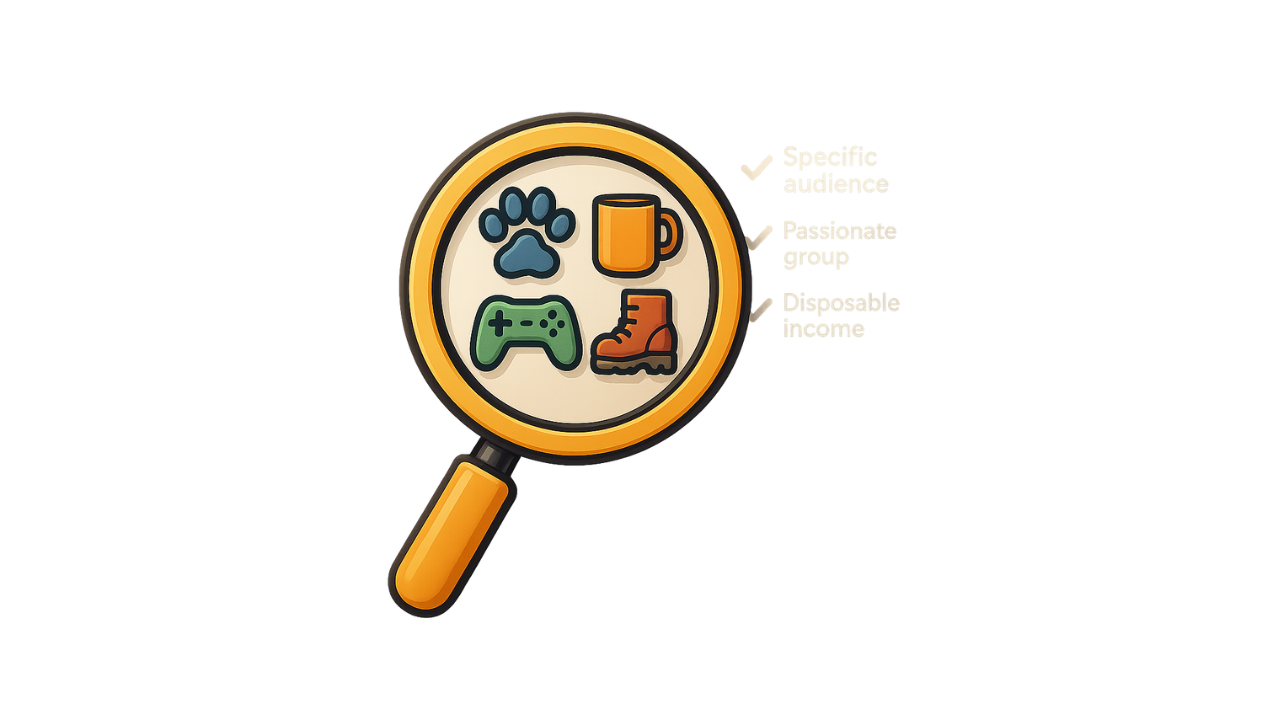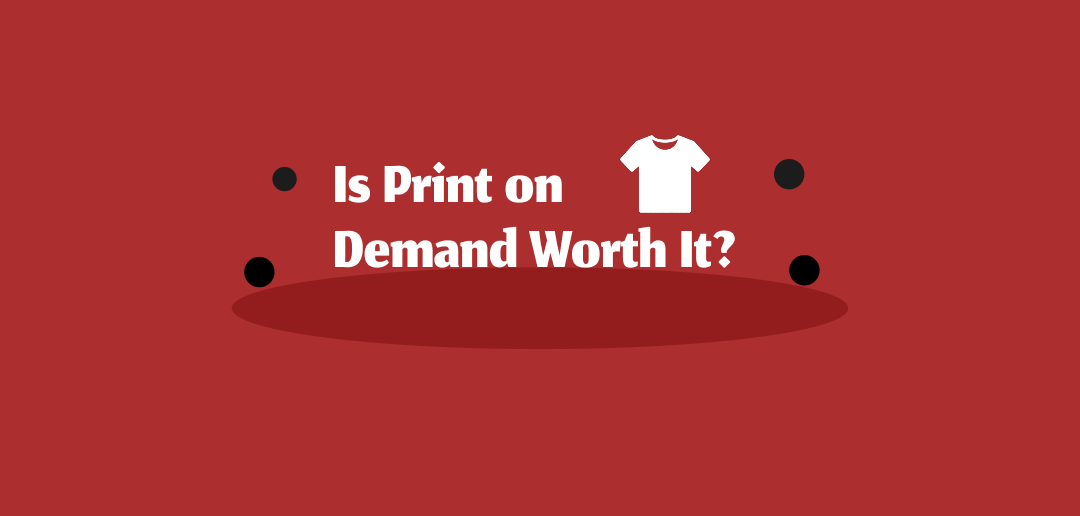STOP. Before you upload another generic cat meme to a t-shirt hoping for easy money, read this. The print-on-demand landscape has evolved – and there are real opportunities if you approach it smartly.
Print on demand hit $12.96 billion in 2025, and while the "upload and pray" days are over, there's never been a better time for serious sellers. The market has matured, which means less competition from people just throwing random designs at the wall. If you're willing to put in real effort, you can build something profitable.
Most successful sellers make $200-1,000+ monthly after finding their groove. It takes 3-6 months to gain momentum. You'll work 10-20 hours/week initially. Ready to build something real? Keep reading.

What is Print on Demand?
You create designs, upload them to sites like Printify or Amazon, and when someone buys your design on a mug or t-shirt, the company prints and ships it. You get the profit without buying inventory or dealing with shipping. It's like having a t-shirt business without the headaches.
The opportunity? You're competing with others, but most aren't doing it strategically. That's your advantage.
The Money Reality: What You'll Actually Make
What successful people earn: Sellers who find their niche and stick with it typically make $200-1,000+ monthly after their first year. Many hit $1,000-5,000 monthly once they understand what works, and the top performers make serious money – we're talking six figures annually.
What this means for you: Start this as a serious side business with growth potential. Many sellers eventually replace their day job income, but give yourself time to build momentum.
Level Up With PrintCube!
Simply use PrintCube for print on demand. Get started for free. No credit card or subscription required.
Sign Me Up!Where to Start: Pick ONE Platform
Just use Printify. Seriously, don't overthink this part.
Why Printify? It's free to start, has tons of products, and connects to everywhere you want to sell (Etsy, your own website, even Amazon). The other companies are fine too, but you'll waste weeks comparing them instead of actually making designs.
Where to sell your stuff:
- Etsy - Good for unique, artsy designs. Lots of buyers but tons of competition
- Your own Shopify store - More work but you control everything
- Amazon - Huge audience but really hard to get accepted and stand out
Start with Etsy through Printify. You can always expand later.
What Actually Sells: The Top 5 Products

Forget the fancy market research. Here's what actually makes money:
1. Mugs (15oz ceramic) - Profit margin: 60-70%. Everyone drinks coffee and wants their mug to say something about them.
2. T-shirts - Profit margin: 40-50%. Still popular but super competitive. You need a really specific niche.
3. Stickers - Profit margin: 70%+. Cheap to make, people buy lots of them. Great for laptop/water bottle designs.
4. Wall art/posters - Profit margin: 50-60%. Home decor is huge. Motivational quotes and minimalist designs work well.
5. Notebooks/journals - Profit margin: 65%. Everyone thinks they'll start journaling. Productivity and self-care niches work.
What this means for you: Start with mugs. They're profitable, people actually buy them, and there's less competition than t-shirts.
How to Find Your Winning Niche
This is where most people get stuck. "Pick a niche" sounds simple until you're staring at a blank screen wondering what the heck your niche should be.
Start with what you know: Think about groups of people you understand or are part of. Are you a teacher? Dog owner? Work in healthcare? Have a hobby you're passionate about? That's your starting point.
Make it specific: Instead of "dog owners," try "Golden Retriever owners who treat their dogs like children." Instead of "nurses," try "ICU nurses who work night shifts." The more specific, the easier it is to create designs that really speak to them.
Quick validation technique:

- Go to Etsy and search your niche idea (like "ICU nurse gifts")
- Look at the bestsellers - are people actually buying this stuff?
- Check if there are 20+ different sellers making sales
- If yes, there's demand. If no, try a different angle.
Good niche examples that work:
- Kindergarten teachers who love coffee and wine
- German Shepherd owners (specific dog breed communities are gold)
- New moms who are also nurses
- Gamers who play specific games (Minecraft, Among Us, etc.)
- People with specific hobbies (knitting, hiking, fishing)
Red flag niches to avoid:
- "Everyone" or "funny people" (too broad)
- Political stuff (gets your account banned)
- Anything related to celebrities or brands (copyright issues)
The sweet spot: A group of 10,000-100,000 people who are passionate about something specific and have disposable income. Teachers, nurses, pet owners, and hobby enthusiasts hit this perfectly.
Pro tip: Join Facebook groups for your niche. What do they complain about? What do they love? What inside jokes do they have? That's design gold right there.
Biggest Mistakes That Slow People Down
1. Trying to sell to everyone - "Funny t-shirts" is too broad. "Funny t-shirts for night shift nurses who love coffee" hits a specific audience that will actually buy. Be specific and you'll stand out.
2. Rushing with low-quality designs - Take time to create designs people actually want to wear or display. Good design is your biggest competitive advantage.
3. Expecting overnight success - This is a business that builds momentum over months. The sellers making $2,000+ monthly didn't get there in week one, but they got there by being consistent.
4. Following what's already saturated - By the time everyone's selling "mama bear" shirts, you need something fresh. Find trends early or create your own angle.
5. Not researching what sells - Spend time looking at bestsellers in your niche. What are people actually buying? Double down on what works.
6. Competing only on price - People will pay $18 for a great design that speaks to them rather than $12 for something generic. Focus on value, not being the cheapest.
What this means for you: Avoid these common pitfalls and you're already ahead of most sellers. Success comes from being strategic, not just busy.
Level Up With PrintCube!
Simply use PrintCube for print on demand. Get started for free. No credit card or subscription required.
Sign Me Up!The 2025 Opportunity
The market is more mature than it was 5 years ago, which actually works in your favor. While there are more stores now, there's also way more demand for custom products. Amazon and Etsy have higher standards, which means lower quality sellers get filtered out faster.
Here's your advantage: most sellers still take a spray-and-pray approach with low-effort designs. If you focus on a specific niche and create quality designs, you'll stand out immediately.
The people making real money now treat this professionally. They research their customers, create quality designs, engage on social media, and continuously improve. It's work, but it's also an opportunity to build something substantial.
Plus, the tools and platforms keep getting better. Design software is more accessible, print quality keeps improving, and new platforms are emerging that give you more ways to reach customers.
Bottom Line: Is This Worth Your Time?
Absolutely try it if: You want to build a side business over 6-12 months, you're willing to learn and invest effort, and you have a specific group of people in mind that you understand.
My honest take: Print on demand offers a real opportunity to build a profitable side business with relatively low startup costs. While it's not the "upload once, earn forever" dream some people sell, it's also not as hard as traditional retail businesses that require inventory and shipping.
The key is approaching it strategically. The sellers making $1,000+ monthly aren't just lucky – they found their niche, consistently create quality designs, and treat it like a real business.
If you're still interested, start focused. Pick a niche you understand, learn design basics, upload 15-20 products, and commit to 6 months. Many successful sellers say their breakthrough came around month 4-6 once they found what resonated with customers.
The opportunity is there. The question is whether you'll approach it seriously enough to capture it.
Ready to start? Pick your niche this week, set up Printify, and create your first 5 designs. Six months from now, you could be looking at your first $500+ month and planning how to scale up.
Level Up With PrintCube!
Simply use PrintCube for print on demand. Get started for free. No credit card or subscription required.
Sign Me Up!
